H.H. the 101st Gaden Trisur Rinpoche’s Vajrayogini Teachings and Text

His Holiness the 101st Gaden Trisur Jetsun Lungrik Namgyal Rinpoche, the throneholder emeritus of Lama Tsongkhapa’s throne, has composed a text elucidating the practice of Vajrayogini.
(by Tsem Rinpoche and Pastor Niral Patel)
From 31st May to 2nd June 2018, His Holiness the 101st Gaden Trisur Jetsun Lungrik Namgyal Rinpoche gave a three-day teaching on the sacred Highest Anuttarayoga Tantra practice of Vajrayogini to a group of approximately 50 Sangha members and 40-50 lay practitioners at his Dharma centre in France, Thar Deu Ling.

His Holiness Gaden Trisur Rinpoche transmitted the Vajrayogini teachings in June 2018. Click to enlarge.
During the event, copies of a very special text containing teachings on the Tantric Buddha Vajrayogini were also distributed. This text was composed by His Holiness Gaden Trisur Rinpoche, in accordance with teachings he personally received from His Holiness Kyabje Zong Rinpoche.
What’s incredible is that even though His Holiness Gaden Trisur Rinpoche is at the advanced age of 92, he is still turning the wheel of Dharma. Those who had the fortune to receive the teachings from His Holiness, a pure and attained practitioner whose samaya with Kyabje Zong Rinpoche is intact, are truly very blessed. As can be seen from the photos and videos below, His Holiness was radiant throughout the three-day teaching despite having to endure difficulties and discomfort due to his advancing years.
The title of Gaden Trisur is given to those eminent masters who have served office as the Gaden Tripa, or Holder of the Gaden Throne. The occupant of this position is considered to be the representative of Lama Tsongkhapa on earth. Lama Tsongkhapa is the founder of the Gelug tradition of Tibetan Buddhism who is said to reside in Gaden Heaven, also known as the Pure Land of Tushita. Therefore, the Gaden Tripas are the spiritual leaders of the Gelug School, the dominant Buddhist tradition of Tibet since the mid-17th century.
The selection of the Gaden Tripas is unique in that it is based on a hierarchical progression dependent on a monk’s learning, practice and adherence to the monastic vows and commitments, and not based on recognition as a reincarnation or hereditary birth-right. So, no monk or reincarnated lama can rise to this highest position without serious and sustained learning and practice. On the contrary, even an ordinary monk can ascend to the throne of the Gaden Tripas on the basis of his wisdom, practice, attainments and merits.
The Gaden Tripa is appointed once every seven years, alternating between the senior-most Jangtse Choeje (Lord of the North) and Sharpa Choeje (Lord of the East). The appointment is automatic at this level but is confirmed by His Holiness the Dalai Lama, who publicly announces the appointment at the time of the changeover. Those who have completed their term as Gaden Tripa automatically receive the title Gaden Trisur or Gaden Tripa Emeritus.
His Holiness Gaden Trisur Rinpoche was born in 1927 in Kham, eastern Tibet. He was ordained as a novice monk at the tender age of eight in 1935 in his local monastery in Yangding, but later enrolled at Gaden Shartse Monastery, where he studied under many highly attained and learned masters. Escaping from Tibet in 1959, he arrived in Buxa, a border town between India and Bhutan. There, he completed his education.
Rising through the ranks, His Holiness Gaden Trisur Rinpoche earned his Geshe Lharampa (equivalent to a Ph.D. in Buddhist studies) in 1970 and then his Geshe Ngarampa (specialist in Tantra) in 1973. Then in 1983, His Holiness was elevated to the position of Abbot of Gyutö Tantric College by His Holiness the 14th Dalai Lama. His Holiness Gaden Trisur Rinpoche became the Abbot of Gaden Shartse Monastery in 1992, and was then bestowed the honorary title of Sharpa Choeje in 1995, the second highest rank in the Gelugpa tradition alongside the Jangtse Choeje.
On 20th January 2003, the Dalai Lama announced the appointment of His Holiness as the 101st Gaden Tripa, during the conclusion of the Kalachakra empowerment in Bodhgaya, India.
Having completed his seven-year term as the 101st Gaden Tripa, His Holiness was bestowed the title of Gaden Trisur or Gaden Tripa Emeritus.* Since then, His Holiness has resided in Paris, France. You can read more about His Holiness Gaden Trisur Rinpoche’s biography here.
His Holiness Gaden Trisur Rinpoche is a great practitioner of Sutra and Tantra, and has held Dorje Shugden as his principal Dharma Protector throughout his life, even when he served as the Gaden Tripa. There may be some people who say that Dorje Shugden is a harmful practice, but that is not true and His Holiness Gaden Trisur Rinpoche is living proof of this. Others may also say that the highest of the Gelugpa lamas do not practise Dorje Shugden, but who is higher than His Holiness Gaden Trisur Rinpoche?
In fact, having reached the age of 92 and still being able to give teachings and being in good health, all goes to show you that the power of the practices he engages in are correct. He is a strong advocate of Dorje Shugden practice and on top of that he is an inspiration to Dorje Shugden lamas who number into the hundreds, and Dorje Shugden practitioners who number into the hundreds of thousands around the world. He is a tremendous inspiration.
For an accomplished master such as His Holiness Gaden Trisur Rinpoche to write a book about the Vajrayogini practice shows us the importance of this practice in this day and age. Over 2,500 years ago, the Buddha taught many types of Tantra which hasten the process of gaining Enlightenment, the ultimate goal of all Buddhists. Among these is a class of Tantra known as the Highest Yoga Tantra or Maha Anuttarayoga Tantra. These include the likes of Vajrayogini, Heruka Chakrasamvara, Guhyasamaja, Yamantaka, Kalachakra, Chenrezig Gyalwa Gyatso, Cittamani Tara and Hevajra. These practices are said to be more efficacious and allow us to quickly gain spiritual attainments through our practice. This category of Tantra is further divided into two, the Father Tantras and the Mother Tantras.
The Father and Mother Tantras are not defined by whether the Tantric deity is male or female but by the method one engages in to achieve Enlightenment. The Father Tantras focus on a method known as great bliss or the generation of the rainbow body, whereas the Mother Tantras focus on a method known as clear light. Within the class of Mother Tantras, one of the most supreme is that of Vajrayogini.
For Vajrayogini practitioners who adhere to the four pre-requisites of:
- Having confidence in the effectiveness of her practice;
- Practising guru devotion;
- Upkeeping the tsok offering commitments twice a month on the appropriate days; and
- Reciting the prayer to be reborn in Kechara Paradise three times each day
Then, merely by reciting her mantra daily without break, it is said that a sincere Vajrayogini practitioner can gain spiritual attainments, perceive her holy form, and even ascend to her pure land — Kechara Paradise.

Click to download the Vajrayogini commentary composed by His Holiness the 101st Gaden Trisur Rinpoche.
For practitioners of the lowest scope or merits, they will ascend to Kechara Paradise within 14 lifetimes, where they can receive teachings from her directly. For practitioners of the medium scope, upon their passing, they will meet her in the bardo or intermediate state between rebirths, and she will take them to Kechara Paradise. For practitioners of the highest scope, they will not leave their body behind, but be taken in their current body to Kechara Paradise itself. This is something that has been witnessed or experienced by many practitioners of the past.
Therefore, Vajrayogini’s practice is extremely powerful and is considered a direct antidote and counter to desire, attachment and sexual energy. This sort of energy, if misdirected, can cause a lot of heartache and problems. However, Vajrayogini’s practice is a direct counter to these and many other wrong states of mind.
To make Vajrayogini’s practice more accessible and understandable to those with the necessary empowerments, His Holiness Gaden Trisur Rinpoche composed this commentary on Vajrayogini’s practice titled “Jetsun Dorje Naljormai Zabtri Chejawa Zhugso” based on teachings that he received directly from His Holiness Kyabje Zong Rinpoche.

His Holiness Gaden Trisur Jetsun Lungrik Namgyal Rinpoche gave the Vajrayogini teachings based on teachings he received directly from Kyabje Zong Rinpoche.
Kyabje Zong Rinpoche was a powerful and learned Tantric practitioner, who also served as the Abbot of Gaden Shartse Monastery in Tibet. Kyabje Zong Rinpoche was known to be a realised master of the highest calibre, learning and practice and was also a disciple of His Holiness Kyabje Trijang Rinpoche, the junior tutor of His Holiness the 14th Dalai Lama. You can read more about Kyabje Zong Rinpoche here.
This Vajrayogini text can be printed out, respectfully wrapped up and kept on your altar as a principal source of refuge, since it is very sacred and holy. Making offerings to this holy text on Vajrayogini will generate tremendous amounts of merits. For those without the Vajrayogini empowerment, it will create the causes to receive her sacred practice in the future, and for those who have already received her practice, it will help create the causes to attain the results of her practice.
This Vajrayogini text is written in Tibetan but this does not matter because when something is holy, it has value on its own. So, I highly recommend people to download this text and keep it for the future. Perhaps in the future an English translation will be made available. It can also be placed on USB thumb-drives to be inserted into statues, or printed out to be inserted into larger statues.
* Even though a master who has completed their term of office as a Gaden Tripa is known as Gaden Trisur, they can still be referred to as Gaden Tripa as they once held that eminent position.
Photos and Videos of His Holiness Gaden Trisur Rinpoche Giving Vajrayogini Teachings in June 2018

His Holiness Gaden Trisur Rinpoche, assisted by Venerable Geshe Tenzin Peljor, arrives at Thar Deu Ling Dharma centre in France to transmit the Vajrayogini teachings

Venerable Geshe Tenzin Peljor makes a mandala offering to His Holiness Gaden Trisur Rinpoche

Venerable Geshe Tenzin Peljor makes a mandala offering to His Holiness Gaden Trisur Rinpoche

His Holiness Gaden Trisur Rinpoche during the three-day Vajrayogini teachings

A group picture of His Holiness Gaden Trisur Rinpoche and those who attended the Vajrayogini teachings

A group picture of His Holiness Gaden Trisur Rinpoche and those who attended the Vajrayogini teachings

The radiant His Holiness Gaden Trisur Rinpoche and Venerable Geshe Tenzin Peljor
Or view the video on the server at:
https://video.tsemtulku.com/videos/GadenTrisurVYTeachings2.mp4
Or view the video on the server at:
https://video.tsemtulku.com/videos/GadenTrisurVYTeachings1.mp4
Addendum: Who is the Gaden Tripa
The Gaden Tripa is known as the Holder of the Gaden Throne. The occupant of this position is considered to be the representative of Lama Tsongkhapa on earth. Lama Tsongkhapa is the founder of the Gelug tradition of Tibetan Buddhism. You can learn more about the Gaden Tripa by watching the video below.
Or view the video on the server at:
https://video.tsemtulku.com/videos/HHTheGadenTripa.mp4
The picture below was taken in Gaden Shartse Monastery’s main prayer hall during Lama Chopa puja. In the front row is His Holiness Gaden Trisur Jetsun Lungrik Namgyal when he was the abbot of Gaden Shartse Monastery. Next to him is His Holiness Kyabje Zong Rinpoche and His Eminence the young Tsem Rinpoche. Sitting behind wearing the hat is Venerable Geshe Lobsang Phende as head chant master.
 Kandarohi, Vajra Yogini and Dorje Shugden. Kandarohi is one of the Four Heroines of the Cardinal Directions from Vajra Yogini’s mandala and is known as the “Goddess of Action”. Click on image to enlarge or click here for more beautiful thangkas.
Kandarohi, Vajra Yogini and Dorje Shugden. Kandarohi is one of the Four Heroines of the Cardinal Directions from Vajra Yogini’s mandala and is known as the “Goddess of Action”. Click on image to enlarge or click here for more beautiful thangkas.
For more interesting information:
- H.H. Gaden Trisur Lungrik Namgyal’s 90th Birthday Celebration
- The Courage and Purity of HH the 101st Gaden Trisur Rinpoche
- His Holiness the 101st Gaden Tripa Rinpoche
- HH Kyabje Zong Rinpoche’s Biography
- HH Kyabje Zong Rinpoche Teaches Gaden Lhagyama
- Short Sharing About Kyabje Zong Rinpoche
- Kyabje Zong Rinpoche’s Advice on Dorje Shugden’s Practice
- HH Kyabje Zong Rinpoche on the Heruka Body Mandala
- 6 Yogas of Naropa by HH Kyabje Zong Rinpoche
- 13 Deity Yamantaka by HH Kyabje Zong Rinpoche
- HH Kyabje Zong Rinpoche’s Commentary on Guhyasamaja
- Vajrayogini Category
- Starting On Vajra Yogini NOW! | 今天就开始修习金刚瑜伽母
- Vajrayogini – The Powerful Divine Red Lady
- Getting Closer to Vajrayogini
- Tea Offering to Vajrayogini (For the 1st Time!)
Please support us so that we can continue to bring you more Dharma:
If you are in the United States, please note that your offerings and contributions are tax deductible. ~ the tsemrinpoche.com blog team





























































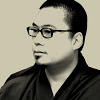






































































































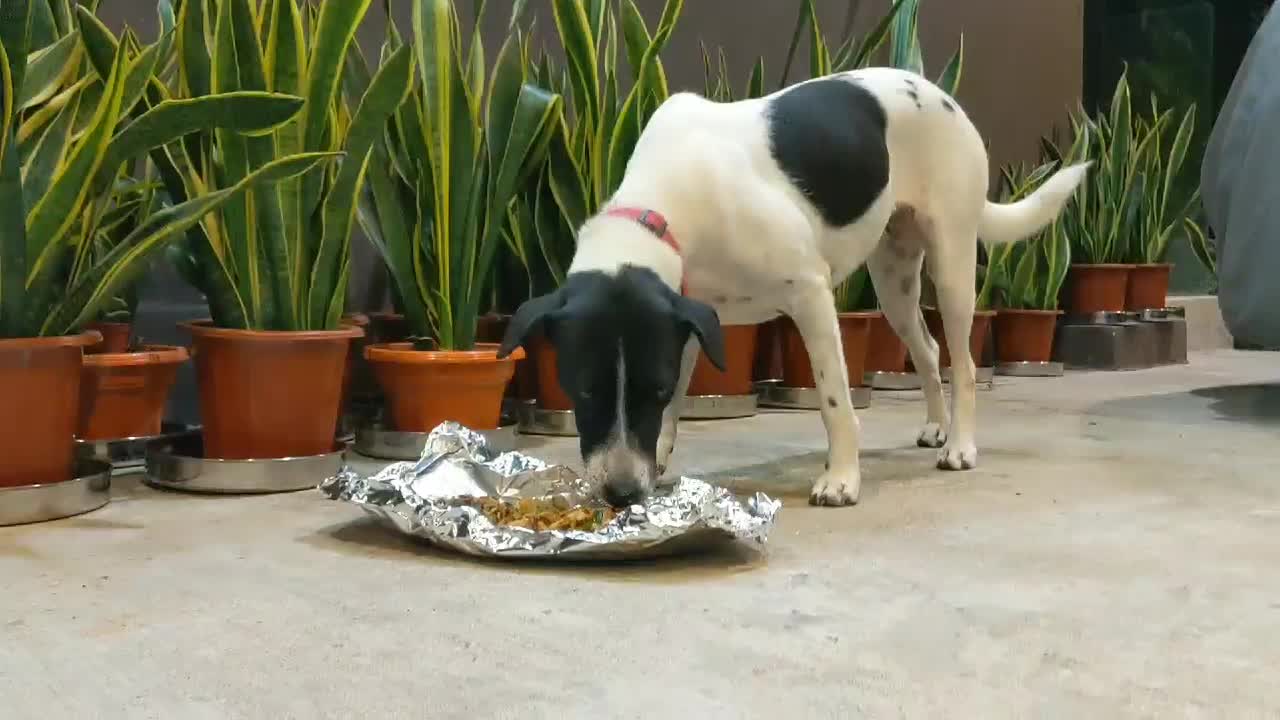
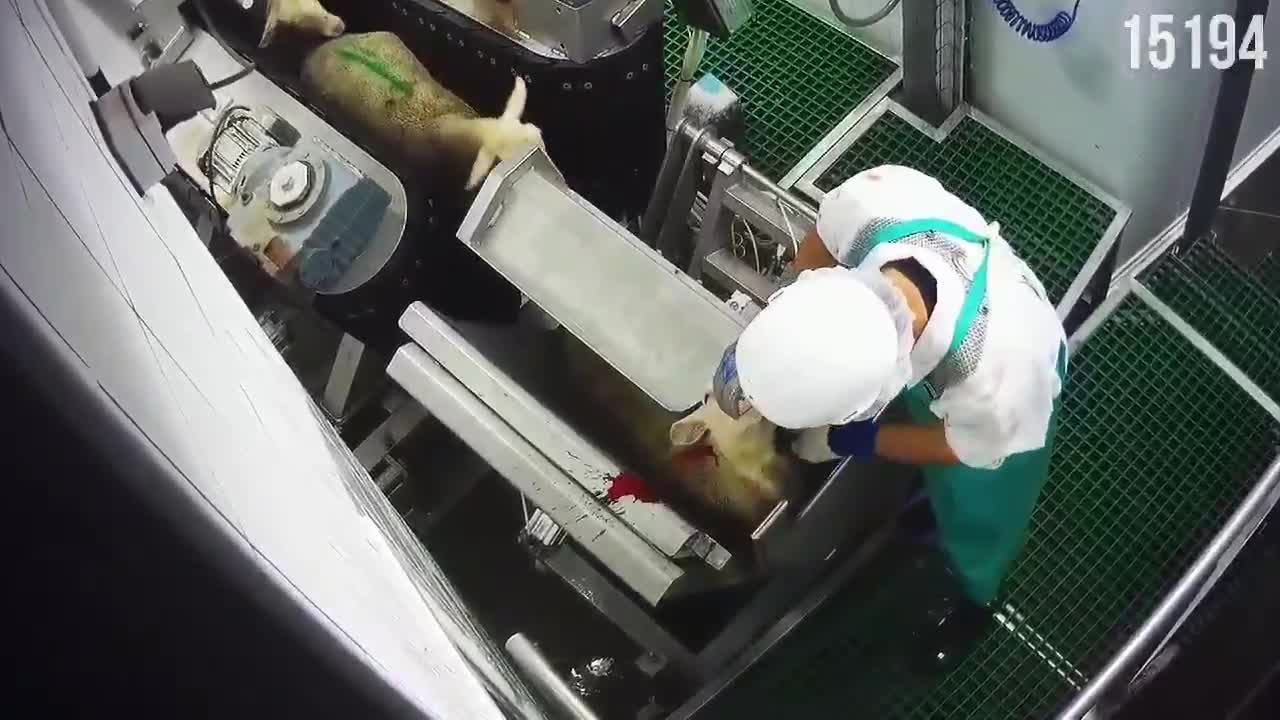

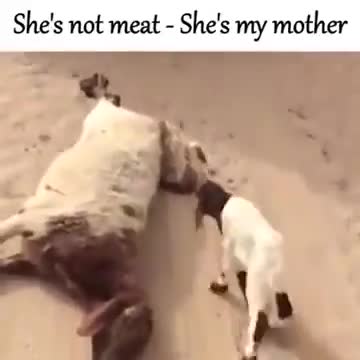
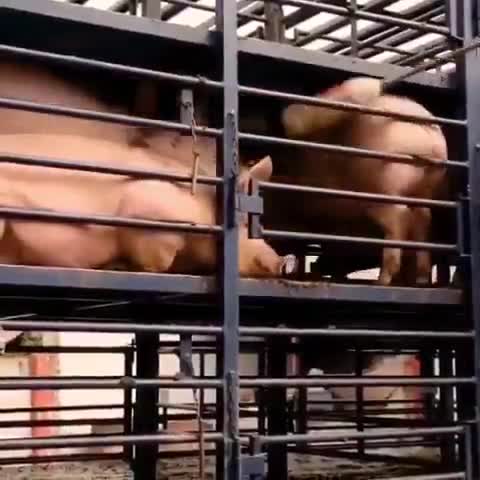

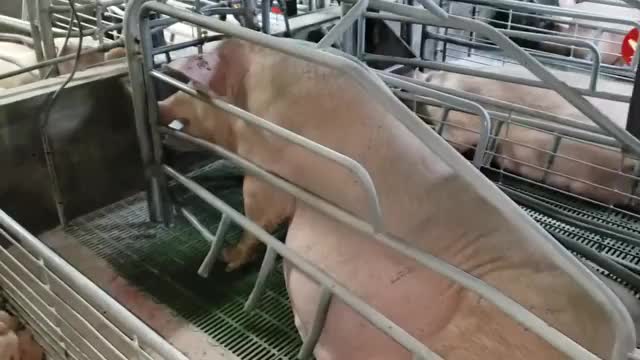
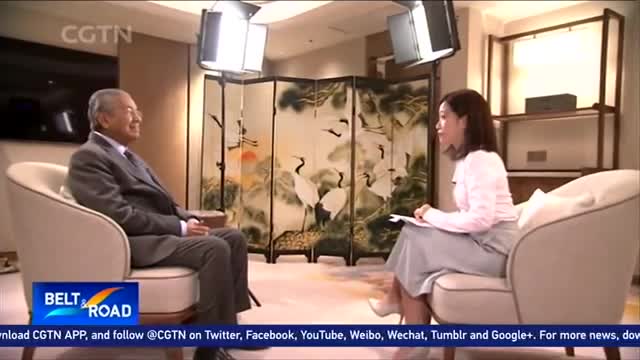
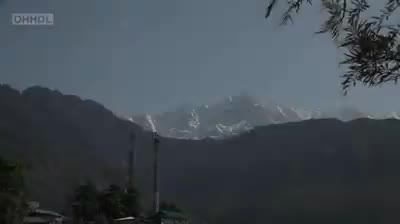
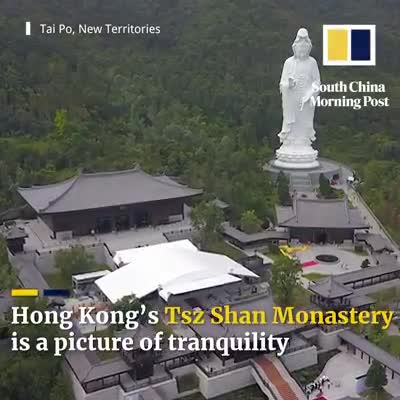

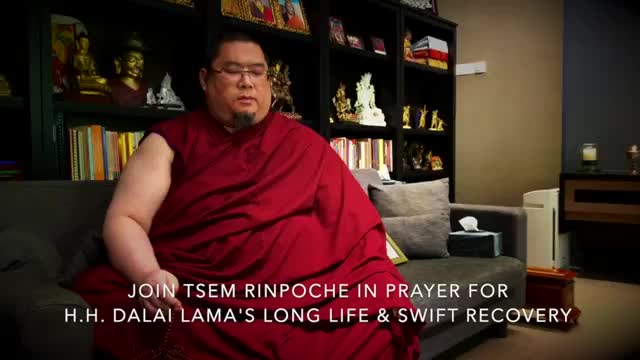
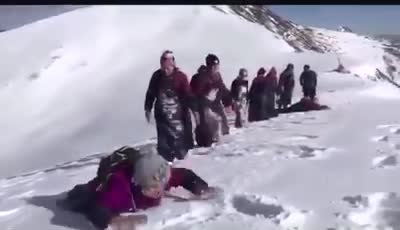
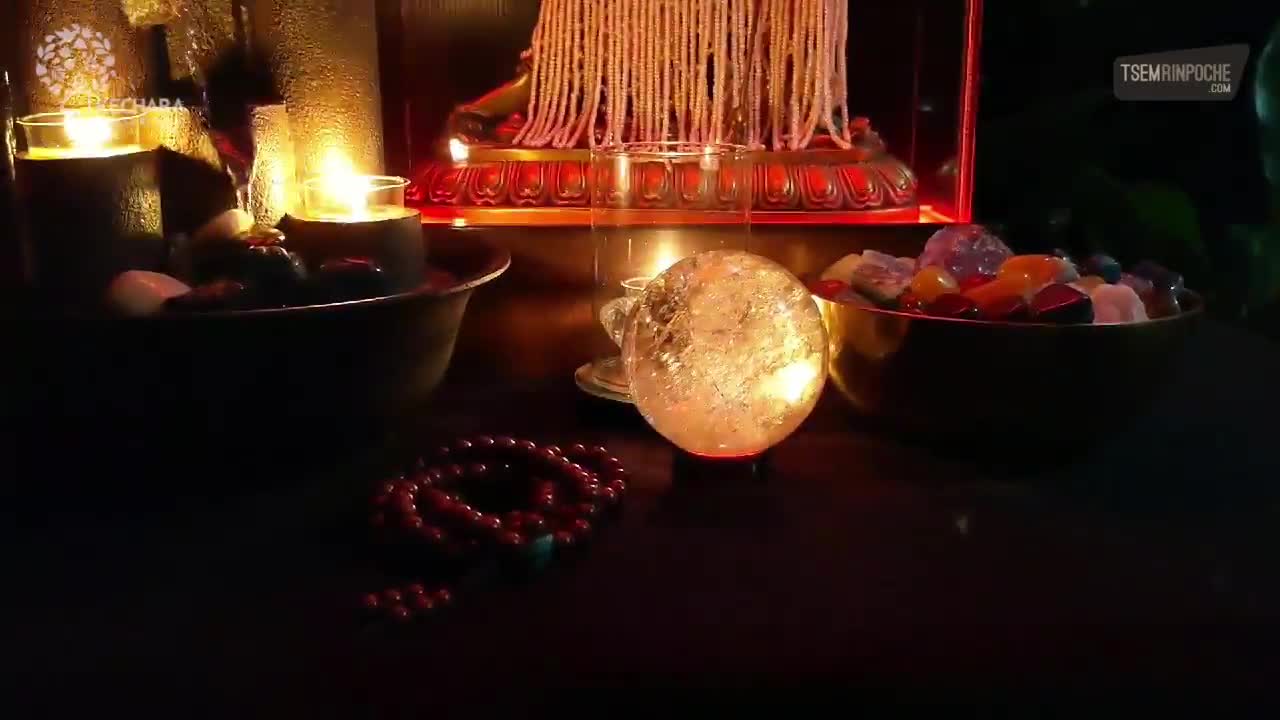

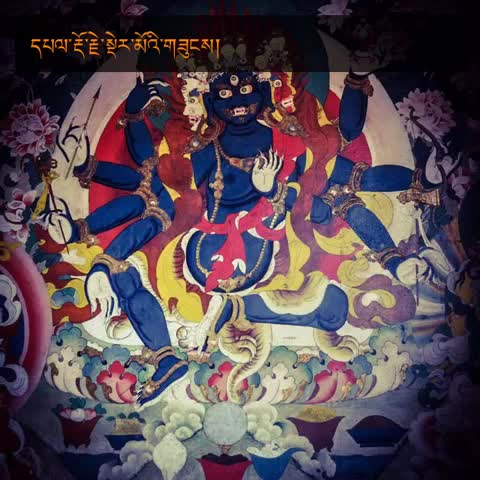
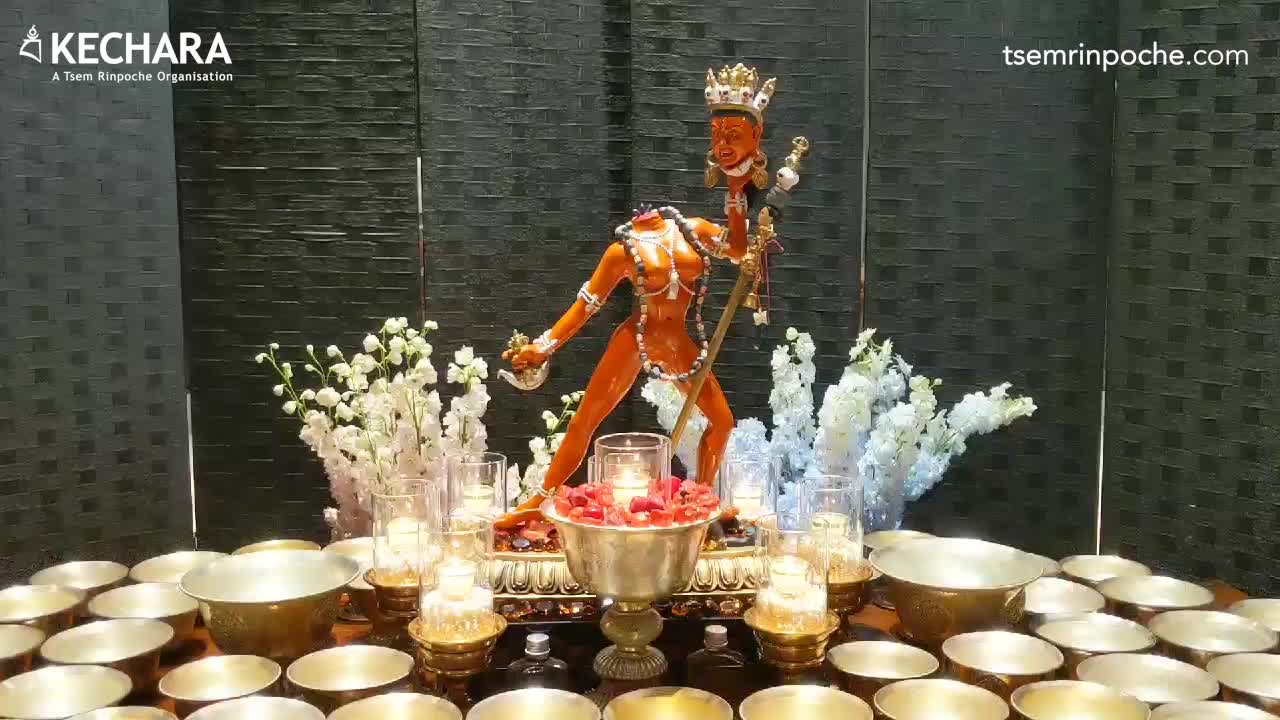





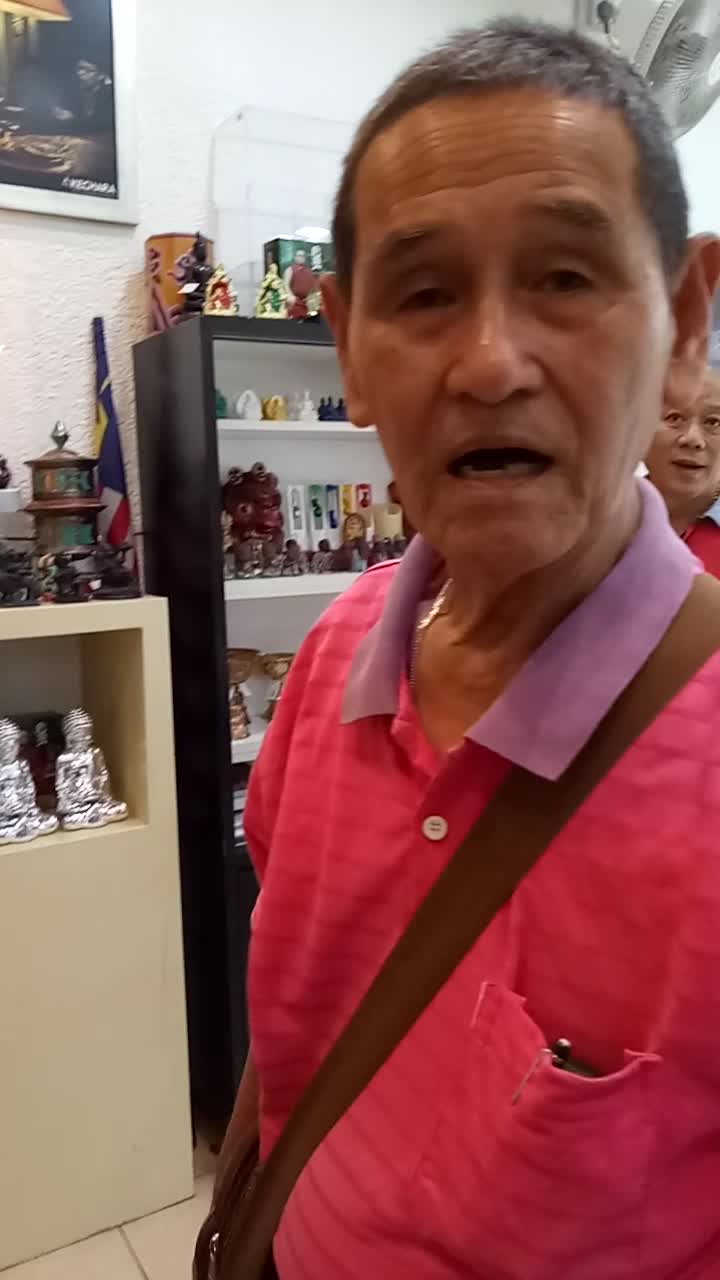







































































Starting on Vajra Yogini now. Practicing Vajra Yogini without initiation.
Find out more- https://bit.ly/2JjTTXp
https://video.tsemtulku.com/chat-videos/2019/04/chat-1554237623.mp4
Dear friends around the world,
Many people have asked how to connect with Sacred Diamond Dakini Vajra Yogini without initiation and formal commitments. I have explained how to do so here: https://bit.ly/2JjTTXp
Any form of Vajra Yogini you worship leads to the same benefit. All her forms are just her wisdom manifesting for different karmic propensities at different time periods.
Please be blessed with these beautiful pictures of Ucheyma (Severed Head Vajra Yogini) from my personal shrine. Read more on this sacred form.- https://bit.ly/2QghvhS
May you all be blessed and ascend to Kechara Paradise.
Humbly, Tsem Rinpoche
——————————————————————————
致世界各地的朋友:
人们曾无数次问我:如何在没有受灌顶和誓言的情况下,跟殊胜的金刚空行母——金刚瑜伽母结缘。我已经在此文中跟大家解释:https://bit.ly/2JjTTXp
不管我们供奉以哪种形象示现的金刚瑜伽母,所得的益处是一样的。她以无上智慧,顺应不同时代众生的业力而示现不同形象。
衷心希望我佛坛上的“乌切玛”(断首金刚瑜伽母)像的这些庄严相片能加持你的心续。更多关于这一殊胜法相的资料,可在此阅读:https://bit.ly/2QghvhS
祈愿你获得加持,日后能登克切拉净土。
詹杜固仁波切敬启
https://video.tsemtulku.com/videouploads/comment-1552837239.mp4
Dear friends around the world,
Many people have asked how to connect with Sacred Diamond Dakini Vajra Yogini without initiation and formal commitments. I have explained how to do so here: https://bit.ly/2JjTTXp
Any form of Vajra Yogini you worship leads to the same benefit. All her forms are just her wisdom manifesting for different karmic propensities at different time periods.
Please be blessed with these beautiful pictures of Ucheyma (Severed Head Vajra Yogini) from my personal shrine. Read more on this sacred form.- https://bit.ly/2QghvhS
May you all be blessed and ascend to Kechara Paradise.
Humbly, Tsem Rinpoche
——————————————————————————
致世界各地的朋友:
人们曾无数次问我:如何在没有受灌顶和誓言的情况下,跟殊胜的金刚空行母——金刚瑜伽母结缘。我已经在此文中跟大家解释:https://bit.ly/2JjTTXp
不管我们供奉以哪种形象示现的金刚瑜伽母,所得的益处是一样的。她以无上智慧,顺应不同时代众生的业力而示现不同形象。
衷心希望我佛坛上的“乌切玛”(断首金刚瑜伽母)像的这些庄严相片能加持你的心续。更多关于这一殊胜法相的资料,可在此阅读:https://bit.ly/2QghvhS
祈愿你获得加持,日后能登克切拉净土。
詹杜固仁波切敬启
The Library of Tibetan Works and Archives is in Dharamsala, which is broken into two parts. Upper Dharamsala is where the Dalai Lama’s palace is located with his audience room & main prayer hall. It is also the location of the Dialectics School, Gaden Shartse’s guesthouse, restaurants, tourist hotels and main tourist areas.
A short ride down takes you to the lower part of Dharamsala where the Tibetan government is located. It is the location of the Tibetan Parliament in Exile, Nechung monastery, the Library of Tibetan Works and Archives, the Tibetan arts centre…it’s all in one area. And the reason why it’s split into upper and lower Dharamsala is because the area is mountainous.
The Library of Tibetan Works and Archives was established by the Dalai Lama and the Tibetan government to preserve all the ancient texts – both secular and spiritual – of Tibet and in the process, translate them into various languages like English. This book, Overview of Buddhist Tantra, by Panchen Sonam Drakpa was one of the books translated into English. What’s very interesting is that the book very clearly says that Panchen Sonam Drakpa’s previous life is Duldzin Drakpa Gyaltsen, one of the five main disciples of Lama Tsongkhapa. It also says that after that, he was Tulku Drakpa Gyaltsen.
So the book is basically saying that Tulku Drakpa Gyaltsen, Panchen Sonam Drakpa and Duldzin Drakpa Gyaltsen – the three Drakpas – are of the same mindstream.
Now that’s very peculiar because if Tulku Drakpa Gyaltsen’s previous life is Panchen Sonam Drakpa, the renowned composer of 45 volumes of Dharma texts, the abbot of three monasteries AND the 15th Gaden Tripa, the holder of Lama Tsongkhapa’s throne…if that’s the case, how can Panchen Sonam Drakpa take rebirth as Tulku Drakpa Gyaltsen and become an evil spirit and have a negative mind?
Prior to Tulku Drakpa Gyaltsen, he was Panchen Sonam Drakpa and before that, he was Duldzin Drakpa Gyaltsen, a heart disciple of Lama Tsongkhapa. How can a heart disciple of Lama Tsongkhapa reincarnate as the erudite master Panchen Sonam Drakpa, and then die and reincarnate as Tulku Drakpa Gyaltsen…and then Tulku Drakpa Gyaltsen, due to a bad and negative prayer, become the evil spirit Dorje Shugden? How is that possible? Logically, it’s not.
What’s incredible is that all of this was printed by the Library of Tibetan Works and Archives under the Dalai Lama’s guidance. They contradict themselves because on one hand, the Tibetan leaders say Dorje Shugden is an evil spirit. On the other hand they’re printing a book saying that Panchen Sonam Drakpa, whose later incarnation became Dorje Shugden, is of this illustrious mindstream.
So how can the Library of Tibetan Works and Archives, which is under the auspices of His Holiness the Dalai Lama and the Tibetan government, print the translation of a book composed by the previous incarnation of a so-called evil spirit? How can they then say in the book that Panchen Sonam Drakpa’s previous life is Duldzin Drakpa Gyaltsen, and his next life was Tulku Drakpa Gyaltsen?
Prior to the Dorje Shugden ban and controversy, everyone in Tibet knew that Dorje Shugden is Tulku Drakpa Gyaltsen, that Tulku Drakpa Gyaltsen is Panchen Sonam Drakpa, and that Panchen Sonam Drakpa is Duldzin Drakpa Gyaltsen. The three Drakpas, they are one mindstream emanating again and again to benefit other beings.
And as we all know, Tulku Drakpa Gyaltsen became Dorje Shugden so it totally doesn’t make sense to call him an evil spirit, then highlight all of his previous lives as erudite masters, and publish all of this information under their own library. So you can see the contradictions. You can read all of this for yourself in Overview of Buddhist Tantra, which was printed by the Library of Tibetan Works and Archives.
—–
OVERVIEW OF BUDDHIST TANTRA
GENERAL PRESENTATION OF THE CLASSES OF TANTRA,
CAPTIVATING THE MINDS OF THE FORTUNATE ONES
rgyud sde spyi’i rnam par bzhag pa
skal bzang gi yid ‘phrog ces bya ba bzhugs so
BY
PANCHEN SONAM DRAGPA
(Pan-chen bSod-nams grags-pa, 1478-1554)
O Choje Sonam Dragpa Pel! (Chos-rje bSod-nams grags-pa-dpal!)
In the vast expanse of Your bodhi-mind,
The mind that the Buddhas have lauded for as many as
one hundred times,
You have developed “merit” shining like the sun.
Through Your skill in learning, debate and writing,
As illuminating as one hundred thousand sun rays,
You have developed in You a complete knowledge of
the entire sutras and tantras,
Resembling a garden of flowers in full bloom.
The power of Your speech is like the sun;
The fame of your name has reached the three realms of
this world.
O Sonam Dragpa, the teacher of teachers!
I bow down at your feet.
In the vast garden of Your great teachings,
The intelligent young people gather for
The ‘six ultimates’ and the ‘four modes of transmission,’
Just as they are attracted to
The one hundred thousand types of nectar
Dripping from a flower of one hundred petals.
May I be able to experience
The taste of the secret tantra!
Panchen Choje Sonam Dragpa Pel (Panchen Chos-rje bSod-nams grags-pa-dpal), the holder of sutra and Vajrayana teachings, was a master whose outstanding learning and spiritual accomplishments are well known by all the learned ones in Tibet. His first incarnation came in the form of one of the five prestigious disciples of Lord Tsongkhapa (Tsong-kha-pa) and became known as Vinaya Holder (Dulzin) Dragpa Gyaltsen (Gragspa rgyal-mtshan). Then came Panchen Sonam Dragpa Pel (Panchen bSod-nams grags-pa-dpal), the author of the present text. The next was Nagri Tulku Dragpa Gyaltsen (mNga’-ris sPrul-sku Grags-pa rgyal-mtshan). In this way, a line of his incarnations, each with the Dragpa (gragspa) surname, followed successively.
Panchen Sonam Dragpa Pel (Panchen bSod-nams grags-pa-dpal) was born in the 14th century in Tsetang (rTsed-thang) in the Lhoka (Lho-kha) region of Central Tibet. He entered the great seat of learning, Sera Thekchenling (Se-ra theg-chen-gling) monastic university, where he became the personal disciple of spiritual master Donyo Dangden (Dhon-yod dang-ldan) and His Holiness the Second Dalai Lama Gedun Gyatso (dGe-‘dun rgya-mtsho). Under them, he studied the entire teachings of sutra, tantra and their commentaries, and became known for his outstanding learning. He also received from them the empowerments, reading transmissions, guides and instructions of the entire body of spiritual training. On becoming the fully blessed one, the Dalai Lama appointed him the abbot of the Loseling (Blo-gsalgling) college, one of the four colleges of Drepung (‘Bras-dpung)- the most prestigious monastic university in Tibet before 1959, with over 10,000 monks on its register. He continued to be the abbot of this college for the next six years; and after him the tenure for each of his successors in this position was fixed for a period of six years, a rule that is followed even today.
He was then appointed the head of the Gelugpa (dGe-lugs-pa) order, the throne holder of Gaden (dGa’-ldan), thus becoming the 15th regent of Lord Tsongkhapa (Tsong-khapa), the second Buddha. In his eulogy to him, Khedrub Gelek Pelsang (mKhas-grub dGe-legs dpal- bzang) says:
O Lama, the second successor of the Unsubduable One,
The regent of the Lord of Dharma,
You are the one who made the virtuous qualities thrive;
You are the one who ascended to the golden throne uplifted
by the fearless lions.
May Your success thrive forever!
He continued to be the throne holder for the next seven years, during which time he promoted the spread of Lord Tsongkhapa’s (Tsong-kha-pa) precious teachings, the Gelug (dGe-lugs) tradition, across the land in all directions. He also paid special attention to the practice of monastic rules and the learning and meditation of Buddhism in the monasteries such as Sera (Se-ra), Drepung (‘Bras-spungs), Kyomolung (sKyo-mo-lung), Phagmo Chode (Phag-mo chos-sde), Nyeding (Nye-sdings), Ödna (’Od-sna) and Chöde Rinchen (Chos-sde rin-chen) etc. and improved them to a great extent. He taught the Third Dalai Lama Sonam Gyatso (bSod-nams rGya-mtsho) as the latter’s spiritual master. It was from him that the Dalai Lama received the name Sonam (bSod-nams).
His contributions in the literary field are enormous; and, indeed, they are the most valuable of all his contributions. Tsongkhapa (Tsong-kha-pa) has rightly said:
Of all one’s deeds,
The ‘deeds of speech’ are the most valuable.
Panchen Sonam Dragpa Pel (Panchen bSod-nams grags-pa-dpal) was a person with an extraordinary talent for teaching, debate and writing. In his colophon to Bu mey chi don zab don sel wey dron mey (dBu ma’i spyi don zab don gsal ba’i sgron me), he wrote:
In the field of teaching, I am [next to none!] Knowing that
I would outdo them in this field, Arya Asanga and his
brother transmigrated into another realm.
In the field of debate, I am [next to none!] Knowing that
I would find out the areas they had contradicted and
that I would examine them and put forth my arguments,
the logician Dignaga (Digh-naga) and Dharmakirti tactfully
bypassed me.
In the field of writing, I am [next to none!] [In my eyes,]
Arya-sura was just good at spreading the works, which
are like ‘disputes~ between an insect and a field.’
I am the learned man. Peerless in the field of teaching,
debate and writing!
For some this passage might sound utterly nonsensical, but the most learned master of our age, the talented teacher, logician and writer, the late tutor to His Holiness the Dalai Lama, Yongdzin Trijang Dorjechang (Yongs-‘dzin Khri-byang rDorje-‘Chang), said: “Now, some people of our time, who consider themselves learned scholars, think that this is utter nonsense; but they are wrong.”
Panchen Sonam Dragpa Pel (Panchen bSod-nams grags-pa-dpal) wrote over 45 volumes of books dealing with many different subjects, such as the commentaries on the sutras and tantras, the saddhana manuals of the tutelary deities, history, religious history and so forth. Among these, one that is very important for all who wish to learn and meditate on the path-of the practical aspect of Buddhism in general and that of Vajrayana in particular is the Leg shey gyu de chi nam par shagpa kelsang gi yi trod (Legs bshad rgyud sde spyi’i rnam par bzhag pa skal bzang gi yid ‘phrod). In this book, he has explained precisely how the four tantras differ from one another. He has also fully described the stages of the two spontaneous path practices of the Vajrayana tradition, dealing with the ‘six ultimates’ and the ‘four modes of transmission’, thus interpreting without mistake the intention of Adhi-Buddha Vajradhara.
May the reprint of this text, which the Library of Tibetan Works and Archives is publishing herewith, bring peace and happiness in this world!
Prof. Nawang Jinpa
St. Joseph’s College
Darjeeling
January 24 1996
All enlightened beings are worthy of homage and worship. They are the best beings to take refuge in and we should offer them our prayers as we can put our full confidence in them. Of all the Buddhas and Bodhisattvas, I personally find that Manjushri is extremely important. This is because what keeps us in samsara (cyclic rebirth) is our total ignorance and misunderstanding of the reality of existence. What is necessary to penetrate this deep ignorance that keeps us bound in a perpetual state of reincarnation is wisdom. We need many types of wisdom which can be acquired by relying on Manjushri as our yidam (meditational deity). By focusing on his meditation, practice, mantra and path we can gain wisdom in order to have the tool to penetrate the reality of existence. Therefore, Manjushri is an extremely important Buddha for us to focus on and take refuge in.
Tsem Rinpoche
(Photograph: this is the beautiful outdoor Manjushri statue who is in a teaching pose. He is floating above a koi fish pond nestled among lush greenery in Kechara Forest Retreat, Malaysia)
每一位觉者都能成为我们朝拜、膜拜的对象。他们是我们至高、至好的皈依,我们应该向他们做祈请,并且对他们生起全然的信念。在众佛菩萨之中,我个人认为文殊菩萨极为重要。这是因为使我们身陷娑婆(轮回)的是我们自身的无明,以及对实相的曲解。智慧是一种必要,它能穿透我们深不见底的无明,那个使我们受困于无止境投生的无明。我们需要多种智慧,而依止文殊菩萨作为我们的本尊,即能使我们成就多种智慧。透过文殊菩萨的观想、修持法门、心咒及修行道路,我们能成就智慧,拥有了知实相的“器具”。故此,专注于文殊菩萨的修持法门、皈依他,对我们而言都极为重要。
詹杜固仁波切
(相片:这尊户外文殊菩萨像呈转法轮姿。他被茂密的草木环绕,安坐在马来西亚克切拉禅修林的鱼池之上。)
A sacred image of the rare form of Vajrayogini known as Ucheyma, the Buddha that shows us the path to eradicate the ego. For this and many other high-resolution images of the enlightened beings to download for free visit: https://bit.ly/2oxb4qU
Ucheyma (Severed Headed Vajrayogini) (Main figure)
(Top to bottom): H.H. the 7th Panchen Lama, Ucheyma (Severed Headed Vajrayogini), Vajra Varnani (green assistant), Vajra Vairocani (yellow assistant), Dorje Shugden and Citipati.
The central deity is known as Chinnamasta or Dorje Neljorma Ucheyma. Both Chinnamasta (Sanskrit) and Ucheyma (Tibetan) literally mean, ‘She Whose Head is Severed’. The meaning behind her form is to show practitioners that they need to completely remove the grasping and self-identification with the “I” or the ego. Generally, the identity of the self is strongly associated with our face more than any other part of our body. We usually recognise a person when we look at a person’s face. Hence, our self-identification or ego is strongly associated with our face. To show us that this self-identification needs to be overcome on the spiritual path to enlightenment, Vajrayogini uses her ritual chopper to decapitate herself. This is symbolic of her practice eradicating the ego.
The Severed Headed Vajrayogini, as she is also known, removes all afflictive mental constructs by removing the root cause – the identification of the self, the ego. We are either attached to or averse to people and circumstances because we have an ego to please, gratify and protect. But in the grander scheme of things, this self-identification with the ‘I’ is illusory and does not really exist. Therefore, Vajrayogini reveals this ultimate truth through the dramatic decapitation of her head and at the same time is still able to live and function. She is able to live due to her direct perception of emptiness and egolessness.
Contrary to what some people might think, the eradication of the self does not destroy individualism, our personality or make us into a mindless person. In fact, the eradication of the ego makes us become a vibrant and compassionate person, someone that has greater awareness of the suffering of others. In other words, we become much warmer, kinder, forgiving, tolerant, conscientious, generous, contemplative and we are become a joy to be with. The cutting of the ego or the ‘I’ brings us towards awakening our true self, the Buddha nature within.
The Severed Headed Vajrayogini has two dakini attendants. From the trunk of her neck, there are three severed blood vessels spurting three jets of blood that flow into the mouths of her own decapitated head that she carries in her left hand and into the mouths of her two attendants. Tsem Rinpoche explained that the three jets of blood represent that her practice purifies the three psychic poisons of ignorance, hatred and desire. In turn, this leads to the attainment of the three bodies of a Buddha – the emanation body, the enjoyment body and the truth body. In other words, the severance of the ego via her tantric path leads to the purification of all delusions and ultimately, the attainment of Buddhahood itself.
The 7th Panchen Lama, Palden Tenpai Nyima is featured floating above because of his compilation of sadhanas from the ancient Sadhanamala texts. This includes a particular sadhana or collection of prayers, visualisation and mantra focused on Ucheyma. Incidentally, Dorje Shugden in many of his previous lives was a lineage master of the Vajrayogini tantras as well. These previous lives include the likes of the Mahasiddha Naropa and Tsarchen Losel Gyatso. The Lord and Lady of the Charnel Ground, known as Citipati, are one of the main protectors of the Vajrayogini Tantra.
Last of all, the ascetic meditator engaging in his devotional practices towards Ucheyma in the cemetery represents the ideal environment for tantric practice because such environments invoke deep renunciation towards worldly affairs and attachments. All Buddhist traditions advocate meditating on the bones of the deceased because it reminds us of our mortality and hence, we develop revulsion towards the transient nature of worldly or ordinary existence.
More free downloads: https://bit.ly/2oxb4qU
Read more about Vajrayogini: https://bit.ly/2iVLCuG
Ucheyma (Severed Headed Vajrayogini) (Main figure)
(Top to bottom): Maitri Kacho (Flying Vajrayogini), Maitri Kacho (One-Leg Up Vajrayogini), Naro Kacho, Sukhasiddhi, Ucheyma (Severed Headed Vajrayogini), Vajra Varnani (green assistant), Vajra Vairocani (yellow assistant), Citipati, Vajravarahi and Dorje Shugden.
The central deity is known as Severed Headed Vajrayogini, Chinnamasta or Dorje Neljorma Ucheyma. Both Chinnamasta (Sanskrit) and Ucheyma (Tibetan) literally mean, ‘She Whose Head is Severed’. The meaning behind her form is to show practitioners that they need to completely remove the grasping and self-identification with the “I” or the ego. Generally, the identity of the self is strongly associated with our face more than any other part of our body. We usually recognise a person when we look at a person’s face. Hence, our self-identification or ego is strongly associated with our face. To show us that this self-identification needs to be overcome on the spiritual path to enlightenment, Vajrayogini uses her ritual chopper to decapitate herself. This is symbolic of her practice eradicating the ego.
The Severed Headed Vajrayogini removes all afflictive mental constructs by removing the root cause – the identification of the self, the ego. We are either attached to or averse to people and circumstances because we have an ego to please, gratify and protect. But in the grander scheme of things, this self-identification with the ‘I’ is illusory and does not really exist. Therefore, Vajrayogini reveals this ultimate truth through the dramatic decapitation of her head and at the same time is still able to live and function. She is able to live due to her direct perception of emptiness and egolessness.
Contrary to what some people might think, the eradication of the self does not destroy individualism, our personality or make us into a mindless person. In fact, the eradication of the ego makes us become a vibrant and compassionate person, someone that has greater awareness of the suffering of others. In other words, we become much warmer, kinder, forgiving, tolerant, conscientious, generous, contemplative and we are become a joy to be with. The cutting of the ego or the ‘I’ brings us towards awakening our true self, the Buddha nature within.
The Severed Headed Vajrayogini has two dakini attendants. From the trunk of her neck, there are three severed blood vessels spurting three jets of blood that flow into the mouths of her own decapitated head that she carries in her left hand and into the mouths of her two attendants. Tsem Rinpoche explained that the three jets of blood represent that her practice purifies the three psychic poisons of ignorance, hatred and desire. In turn, this leads to the attainment of the three bodies of a Buddha – the emanation body, the enjoyment body and the truth body. In other words, the severance of the ego via her tantric path leads to the purification of all delusions and ultimately, the attainment of Buddhahood itself.
Severed Headed Vajrayogini is surrounded by some of her other forms, including Naro Kacho, two forms of Maitri Kacho, Sukhasiddhi and Vajravarahi. These forms of Vajrayogini are more commonly practised compared to Severed Headed Vajrayogini and are prevalent in most Tibetan Buddhist lineages. Though they may look different, all forms are indivisible from her true nature and all her practices can lead practitioners to enlightenment. Naro Kacho arose from a vision beheld by the Mahasiddha Naropa, Maitri Kacho from a vision beheld by Maitripa, and Indra Kacho from a vision beheld by Indrabodhi. The Lord and Lady of the Charnel Ground, known as Citipati, are one of the main protectors of the Vajrayogini Tantra.
Last of all, Dorje Shugden is a protector with special affinity with Vajrayogini practitioners because he arose from an incarnation lineage that includes Naropa and Tsarchen Losel Gyatso who practised and proliferated her Tantra.
More free downloads: https://bit.ly/2oxb4qU
Read more about Vajrayogini: https://bit.ly/2iVLCuG
Vajrayogini (Main figure)
(Top to bottom): Naropa, Vajradharma, Hero Vajradharma, Naro Kacho, Maitri Kacho (Flying Vajrayogini), Dorje Shugden and Vajravarahi.
Vajrayogini is a female tantric Buddha and she has many forms that are derived from various lineages. She mainly embodies the fully enlightened female (shakti) aspect of a Buddha. She belongs to the Mother Tantra classification, which refers to her practice concentrating on the wisdom aspect of the path to Buddhahood. She is also the principal dakini, the compassionate female guides and nurturers of tantric meditation who lead practitioners to enlightenment. In the thangka, the main figure in the middle is Naro Kechari as she arose from the pure vision of the Mahasiddha Naropa.
In Anuttara (Highest) Yoga Tantra, principal dakinis normally appear in union with a male consort and this can be seen in the cases of deities such as Guhyasamaja, Hevajra, and Kalachakra. In the case of Vajrayogini, she is the principal female Buddha of the Chakrasamvara Tantra and therefore, she is normally in union with Heruka Chakrasamvara. Furthermore, Vajrayogini is also considered a Vajradakini, who are yidams or meditational deities in their own right. Their practices have evolved from the main practices of their consorts, simplifying the otherwise complicated original practice by reducing it to a single-deity meditation without sacrificing the main benefits and features of the original. Hence, Vajradakini practices such as Vajrayogini and Nairatmya are derived from the original Chakrasamvara Tantra and Hevajra Tantra respectively.
In essence, Vajrayogini is known as “Sarvabuddha-dakini” or the Dakini Who is the Essence of all Buddhas. Her mantra is known as the King of All Mantras as it has the most powerful ability to bless us with spiritual attainments even without any visualisation or meditation. There are 11 Yogas in the generation stage of her practice and a few which have the power of transforming ordinary actions like sleeping, waking and ordinary daily tasks into a collection of merits. Ultimately, her Tantra offers salvation for ordinary practitioners at death with her special promise of guiding practitioners towards Kechara, or the Paradise of the Dakinis, in which we can continue deep practices to become a Buddha without fear, obstacles and interruptions.
Within Vajrayogini practice, soliciting the blessings of the lama and the lineage master are of paramount importance in order for our practice to bear results. Hence, the lama is visualised as the red Vajradharma with arms crossed at the heart, holding the vajra and bell. The lineage masters are visualised as Hero Vajradharma, holding a damaru and skullcup while cradling a khatvanga. Aside from the main Naro Kechari form, Vajrayogini also appears in the form of Maitri Kechari, who is known as Flying Vajrayogini, and arose from the vision of Maitripa. Another common form is known as Indra Kechari, or Vajravarahi, who arose from the vision of Indrabodhi.
Last of all, Dorje Shugden is a Dharma protector with a special affinity with Vajrayogini practitioners. This is because he himself arose from an incarnation lineage that includes the likes of Naropa, the progenitor of Naro Kechari practice, and Tsarchen Losel Gyatso who had practised and proliferated her Tantra and is listed as one the lineage masters invoked upon every day by Vajrayogini practitioners.
More free downloads: https://bit.ly/2oxb4qU
Read more about Vajrayogini: https://bit.ly/2iVLCuG
His Holiness the 101st Gaden Trisur Jetsun Lungrik Namgyal Rinpoche is an erudite and highly attained lama. He is currently expounding Dharma in his centre in France, Thar Deu Ling. It is amazing that at his age of 92 years old, he is still actively giving teachings and spreading Dharma.
His Holiness Trisur Rinpoche is also a strong Dorje Shugden practitioners. The ban was implemented during the time of him as the Gaden Tripa. To protect the harmony of the Gelug sect, he stayed quiet and served his term. It is best for him to stay quiet during this time because it will be very difficult for the Gelug community to be united when the Gaden Tripa and the Dalai Lama is expressing a different opinion.
Hence, when his term is over. He immediately switched to the Dorje Shugden side. This shows that he holds on to the practice firmly and due to his duties as the Gaden Tripa, he has to endure to protect the benefit of the greater crowd. This is another example of a strong Dorje Shugden practitioner that stand firm on their rights.
Original illustration and text posted by Eric D Hatchell as a reply to H.E. Tsem Tulku Rinpoche’s facebook post on Vajrayogini here: http://bit.ly/VYogini0001
The Dākiṇī with the Essence of all Buddhas, Vajrayoginī
Her practice includes methods to end the otherwise repetitive states of Bardo and rebirth, by transforming the process into a journey, which may lead to full enlightenment. In preparation for which, Vajrayoginī further offers the omnipresent ability to reconstruct the nature of the most, mundane everyday experiences, such that they may reveal higher destinations, via the spiritual paths she may choose to reveal. [1] Vajrayoginī being defined as, “The Dākiṇī who is the Essence of all Buddhas”, [2] is amplified by scholar Miranda Shaw when she implied that this deity is no less than, the supreme nature of the very Tantric pantheon. No male Buddha, including her divine consort, Heruka-Cakrasaṃvara, further advances her in metaphysical implications. [3]
Vajrayoginī’s sādhanā originates from India circa 10/12th C, [4] when summoned as Heruka-Cakrasaṃvara’s Yab-Yum consort [5], with later forms including Vajrayoginī as “Solitary Hero”, she may be visualized with the deep red complexion of a 16-year-old female, whose stance is nude amidst a blazing fire of pristine awareness and most exalted wisdom. Her head is adorned with a crown of five skulls and upon her forehead, the third eye of wisdom is set vertically (represented here by an auspicious jewel). She drapes a necklace of fifty dried human skulls and is depicted with her traditional vajra-handled knife in her right hand; with a blood filled kapala in her left, she drinks with upturned head while looking above, toward the pure realm of Khechara. This seemingly gruesome gesture is actually symbolic of her clear light in great joy, known as “mahasukha” (the great bliss), [6] [7] thus the blood she drinks may be offered to us all as if a fine wine.
Resting on the left shoulder is a Katvanga staff as she stands tall with her two feet, trampling the bodies of red Kalaratri and black Bhairava (with heads bending backward), representing the embodiment of illusion and ego-awareness. The composition, all of which rests above a sun disc and multicolored lotus pedestal, she is rendered here after a thankga of Naropa Tradition (passed down from a special teaching of the Indian Mahasiddha Naropa). Vajrayoginī herself may be classified as the personification of “Wisdom” or “Mother” and her practice originates with the Chakrasamvara Cycle of Tantras, which is one of the five principal tantric practices of the Sakya School, although found in one form or another, she is included in all schools of Tibetan Buddhism. [8]
Vajrayoginī also appears in versions from the Kagyu school of Tibetan Buddhism, with one popular system having the practitioner visualize themselves as Vajrayoginī, as such, their guru taking the form of Milarepa. [9] Thus depicted above the central deity here we see Milarepa on our right, with his great Guru Marpa left (whose guru was Naropa himself, and other great Indian masters). [10]
Vajrayoginī is a simplified, single most form of the female Buddha, who is otherwise a collection of alternate forms. From her sādhanās she is visualized in English terms as “Vajra Sow”, “Wrathful Lady”, “Fierce Black One”, and other such similar manifestations of female energy found in numerous iconographic renderings and traditions. Each feature of Vajrayoginī’s visualization conveys important spiritual concept. For example, her three eyes indicate her ability to see all (past, present and future); her red-colored body symbolizes the blazing of her ”inner fire”, and the curved knife she wields, demonstrates the power to sever the delusions and obstacles of her followers and of all living beings. [11]
—–
Wordmarque Design and Photography
—–
References:
[1] Gyatso, Kelsang. Guide to Dakini Land: The Highest Yoga Tantra Practice of Buddha Vajrayogini. London: Tharpa, 1996, p.xii.
[2] “The Berzin Archives.” Bonding Practices for Mother Tantra. Accessed February 18, 2016. http://www.berzinarchives.com/…/bonding_prac_mother_tantra_….
[3] Shaw, Miranda Eberle. Buddhist Goddesses of India. Princeton: Princeton University Press, 2006, p. 8.
[4] English, Elizabeth. Vajrayoginī: Her Visualizations, Rituals & Forms: A Study of the Cult of Vajrayoginī in India. Boston: Wisdom Publications, 2002.
[5] “Vajrasattva (Buddhist Deity) – White (with Consort).” Vajrasattva (Buddhist Deity). Accessed February 18, 2016. http://www.himalayanart.org/items/77598.
[6] Gyatso, Kelsang. Guide to Dakini Land: The Highest Yoga Tantra Practice of Buddha Vajrayogini. London: Tharpa, 1996 p. 123-127.
[7] Glenn H. Mullin
[8] “Item: Vajrayogini (Buddhist Deity) – (Naropa Tradition).” Vajrayogini (Buddhist Deity). Accessed February 18, 2016. http://www.himalayanart.org/items/290.
[9] English, Elizabeth. Vajrayoginī: Her Visualizations, Rituals & Forms: A Study of the Cult of Vajrayoginī in India. Boston: Wisdom Publications, 2002, p. xxiii.
[10] Drinking the Mountain Stream: Songs of Tibet’s Beloved Saint, Milarepa … by Mi-la-ras-pa, Rinpoche Lama Kunga, Brian Cutillo, p.305.
[11] Gyatso, Kelsang. Guide to Dakini Land: The Highest Yoga Tantra Practice of Buddha Vajrayogini. London: Tharpa, 1996, p.123-127.
For more free high resolution images of Vajrayogini, visit: https://www.tsemrinpoche.com/tsem-tulku-rinpoche/downloads/buddha-images.html?nggpage=9
Medicine Buddha puja encourages healing of all levels – physical, mental and emotional healing for those in need.
High resolution file of this thangka is available for download for all dharma practitioners around the world and for those who just want sacred images in their environment. Enjoy, be blessed and share this with others.
Here is the link to free download of this image and many other images: https://www.tsemrinpoche.com/tsem-tulku-rinpoche/downloads/buddha-images.html?nggpage=7
Nice short video of a new LED signage reminding us of who we can go to for blessings in case of need: https://www.youtube.com/watch?v=EBwrkaKUoH0
This is my beautiful Bodhgaya Vajra Yogini on my personal altar. May you be blessed by her always. Read about her here https://bit.ly/2AfEK4Q
Tsem Rinpoche
Listening to the chanting of sacred words, melodies, mantras, sutras and prayers has a very powerful healing effect on our outer and inner environments. It clears the chakras, spiritual toxins, the paths where our ‘chi’ travels within our bodies for health as well as for clearing the mind. It is soothing and relaxing but at the same time invigorates us with positive energy. The sacred sounds invite positive beings to inhabit our environment, expels negative beings and brings the sound of growth to the land, animals, water and plants. Sacred chants bless all living beings on our land as well as inanimate objects. Do download and play while in traffic to relax, when you are about to sleep, during meditation, during stress or just anytime. Great to play for animals and children. Share with friends the blessing of a full Dorje Shugden puja performed at Kechara Forest Retreat by our puja department for the benefit of others. Tsem Rinpoche
Listen here: https://www.youtube.com/watch?v=ZbzgskLKxT8&t=5821s
The current form of Naro Kacho Vajra Yogini appeared to the Indian Mahasiddha Naropa after he meditated intensely on her practice inside a cave. He beheld her glorious form in a vision. This unique form became known as Naropa’s Vajra Yogini or Naro Kacho, as it had never existed before. Later, in Tibet, His Holiness Kyabje Pabongka Rinpoche also had visions of Vajra Yogini. His vision differed slightly from the vision of her that Naropa beheld. In the original Naro Kacho form, Vajra Yogini looks towards her pure land named Kechara. However in Kyabje Pabongka Rinpoche’s vision, she looked straight at him, symbolic of the deity empowering him to bestow her practice to many people in order to benefit them. The practice of Vajra Yogini belongs to the Highest Yoga Tantra classification that leads to tremendous inner transformation and can even grant enlightenment within just one lifetime.
Video of Tsem Rinpoche’s shrine taken July 16, 2018. Very beautiful, well done and meticulous.
https://www.youtube.com/watch?v=LPAfpMoN2bA
Video of Tsem Rinpoche’s shrine taken July 16, 2018.
Very beautiful, well done and meticulous.
https://video.tsemtulku.com/chat-videos/chat-1531752637.mp4
The 101st Gaden Trisur is an example to all of us, he is quite similar to the Malaysian Prime Minister who is also 93, and is working to bring a better change for our country. In the case of the Gaden Trisur he is bringing benefit not only to a nation but to all sentient beings.
To be a person who sits as the head of the Gelug is no easy feat it takes a lot of merits and good karma to be able to sit on the throne and complete his tenure.
Vajra Yogini has many different forms and in each of these forms, the positioning of her sacred body, the various implements she holds and the expressions on her face have profound meaning into various aspects of enlightenment. The implements she holds, the expressions on her face, and her body symbolise specific aspects of enlightenment that suit people during a particular time and place according to their karma. So, therefore, Vajra Yogini’s pose, forms and emanations change over time in order to suit different karmically-connected practitioners. It will keep changing because enlightenment is fluid, compassionate and skilful. To gaze upon Vajra Yogini is to look at a complete ‘roadmap’ to enlightenment as every aspect of her body is a manifestation of enlightenment. Therefore to have her form, picture, painting or statue is very blessed. We should make offerings to her daily diligently.
After the great Mahasiddha Naropa had served his guru the Mahasiddha Tilopa for 12 years, Tilopa conferred the Vajra Varahi (another form of Vajra Yogini) initiation with full instructions unto Naropa. Then, Naropa diligently meditated on Vajra Varahi and had a vision of her, and when she appeared to him directly, she appeared in the form of Vajra Yogini. Normally, when he engaged in the Vajra Yogini (Vajravarahi) practice, she was in the form of facing him directly, holding a skull cup and a curved flaying knife in front of her heart. One leg was up and one leg was down as in a dancing pose. That was the form of Vajra Yogini that he had meditated on to gain the highest attainments.
After he had meditated on Vajra Varahi and gained visions of her, she appeared to him in a different form, with her face looking up at Kechara Paradise instead of facing him directly. Her left hand holding the skullcup was thrust in the air and her right hand holding the curved flaying knife, also known as a cemetery knife was facing down at sentient beings or samsara to help beings cut their bonds to suffering. Her left leg was bent, and her right extended while standing in a pose of looking towards Kechara Paradise like she is about to take off there. This form signifies she will take you there and out of suffering. That form of Vajra Yogini became special and that was called Naro Kacho or the Vajra Yogini of Naropa. This Naropa’s Vajra Yogini was initiated to the Nepalese Pamtingpa brothers and they meditated diligently and this tradition of Naropa’s Vajra Yogini just became prevalent and took off from there. Naropa started initiating his other disciples as well into this special form of Vajra Yogini and she became known as Naropa’s Vajra Yogini till this day and it is considered a highly blessed lineage. That is the lineage we have now and most prevalent.
She is looking up because this Naropa’s Vajra Yogini is indicating she will lead her practitioners to her Kechara Paradise within one lifetime if you are diligent in her practice. Realizing enlightenment is harder for people in today’s world and needs more time during Kaliyuga degenerate period, she leads you to her paradise where you can practice undisturbed to Buddha-hood.
In this brilliant artwork, what you see is the Mahasiddha Naropa having a direct vision of Vajra Yogini. It’s the first time she has appeared to Naropa in this form. This form is associated with Naropa. Prior to Naropa, this form of Vajra Yogini did not exist. She in this vision is initiating him into this form (Naro Kacho) of herself indicating this form will be most efficacious now according to our karmic period. In the background, you will see a cave with a light in it because when Naropa used to meditate in that cave, it is said that from his body would emit a light and people could see it from afar. You can also see animals surrounding Vajra Yogini, they can feel her compassion and her great blessings and they are at peace around her.
Vajra Yogini brings peace, love, compassion, wisdom and freedom to everyone who practices her incredibly powerful tantra. Therefore, this artwork is a very beautiful representation of the time when Naropa had a vision of Vajra Yogini in this form for the first time and it is now known as Naropa’s Vajra Yogini. This artwork was offered to me as a gift from a very talented artist. I deeply appreciate this piece of visual spirituality very much.
Tsem Rinpoche
To download for your shrine, please click here: https://www.tsemrinpoche.com/?p=62528
In Tibet, a boy from the faraway provinces would normally enter into one of the hundreds of wayside monasteries in order to receive their novice ordination vows. In these smaller provincial monasteries, the young monks received their initial education on reading the Tibetan script, memorisation of the scriptures and so forth. Once these young monks came of age and received their full ordination vows, they would travel great distances to the larger monastic universities such as Gaden (3,300 monks), Sera (6,000 monks), Drepung (10,000 monks), Tashi Lhunpo (4,000 monks) and Amdo Tashikyil (4,000 monks)in order to further their monastic education on the great treatises and so on. Some of these boys from humble beginnings in the provinces would end up becoming great scholars and masters.
བོད་ནང་། ཡུལ་ཐག་རིང་པོའི་ཕྲུག་གུ་གྲྭ་པ་བྱེད་སྐབས་དགེ་ཚུལ་གྱི་སྡོམ་པ་ཞུས་ཆེད་དུ་གྲྭ་ཚང་ཆུང་ཆུང་ནང་ཞུགས་ཀྱི་ཡོད་རེད། མངའ་རིས་ཡུལ་གྱི་གྲྭ་ཚང་ཁག་ནང་། གྲྭ་པ་གཞོན་པ་དེ་དག་གིས་ཐོག་མར་བོད་ཡིག་སྦྱང་གི་ཡོད་པ་དང་། ཞལ་འདོན་སོགས་བློ་ལ་ངེས་པ་བཅས་གནང་གི་ཡོད་པ་རེད། གྲྭ་པ་དེ་རྣམས་ལོ་རྒན་ཚད་ལོངས་རྗེས་དགེ་སློང་གི་སྡོམ་པ་ཞུས་ཚར་ནས། གཞུང་ཆེན་པོའི་ཐོས་བསམ་སློབ་གཉེར་གནང་པའི་ཆེད་དུ་གདན་ས་ཆེན་པོ་ཐོས་བསམ་ནོར་གླིང་གྲྭ་ཚང་དགའ་ལྡན་དང་། (གྲྭ་པ་ ༣,༣༠༠) སེར་རྭ། (གྲྭ་པ་ ༦,༠༠༠) འབྲུས་སྤུངས། (གྲྭ་པ་ ༡༠,༠༠༠) བཀྲ་ཤིས་ལྷུན་པོ། (གྲྭ་པ་ ༤,༠༠༠) ཨ་མདོ་བཀྲ་ཤིས་འཁྱིལ་ (གྲྭ་པ་ ༤,༠༠༠) སོོགས་གྲྭ་ཚང་ཆེན་པོ་ནང་ཕེབས་ཀྱི་ཡོད་པ་རེད། མངའ་རིས་ཆུང་ཆུང་ནས་ཕེབས་པའི་གྲྭ་གཞོན་དེ་དག་ནང་ནས་འགའ་ཤས་མཁས་པ་དང་སློབ་དཔོན་ཕུལ་དུ་བྱུང་བ་ཐོན།
在西藏,来自偏远地区的男孩一般会分别加入许许多多的小寺院接受沙弥戒。这些分布在不同地区的小寺院会为小沙弥提供初级教育,比如藏文阅读、经典背诵等教育。一旦小沙弥成年且到了接受比丘戒之时,他们将远行万里,到更大规模的寺院,比如甘丹寺(3300僧众)、色拉寺(6000僧众)、哲蚌寺(10000僧众)、扎什伦布寺(4000僧众),以及拉卜楞寺(4000僧众)升学,研习各种佛教大论。有的男孩虽然来自偏远地区、出身低微,但最终也是大有作为,成为伟大的学者和大师。
This was what happened to Kensur Jampa Yeshe Rinpoche and the 103rd Gaden Tripa Lobsang Tenzin. Both of these lamas were originally from Tsem Monastery in the Yara valley of Kham, Tibet. When Kensur Rinpoche was just a young monk entering into Gaden Monastery, Tsem Rinpoche’s previous life was the abbot at that time. On the other hand, the Gaden Tripa was the nephew of Rinpoche’s previous life, Kentrul Thubten Lamsang. Such was the close connection that Tsem Rinpoche had with these two lamas, going back into previous lives. In this life in fact, Tsem Rinpoche offered his own ladrang in Gaden Shartse Monastery to Kensur Jampa Yeshe Rinpoche. Furthermore, the Gaden Tripa Lobsang Tenzin’s ladrang (house) in Drepung Loseling Monastery was fully sponsored by Tsem Rinpoche and his students, and Tsem Rinpoche also fully sponsored on a monthly basis some of the students in the Gaden Tripa’s house. Tsem Rinpoche also found personal sponsorship for the Gaden Tripa himself.
མཁན་ཟུར་བྱམས་པ་ཡེ་ཤེས་རིན་པོ་ཆེ་དང་དགའ་ལྡན་ཁྲི་པ་བརྒྱ་དང་གསུམ་པ་བློ་བཟང་བསྟན་འཛིན་རྣམ་གཉིས་ལ་ཡང་དེ་འདྲ་བྱུང་། བླ་མ་ཁོང་རྣམ་ཉིད་ནི་སྤྱིར་བོད་ཁམས་ཡ་ར་ལུང་པའི་ཚེམས་གྲྭ་ཚང་ནས་ཡིན་པ་དང་། མཁན་ཟུར་རིན་པོ་ཆེ་དགུང་ལོ་གཞོན་ནུ་ཡིན་པའི་སྐབས་གདན་ས་དགའ་ལྡན་དུ་བཞུགས་དུས་ཚེམས་རིན་པོ་ཆེའི་སྐུ་གོང་མ་དེ་ཉིད་གྲྭ་ཚང་གི་མཁན་པོ་ཡིན་པ་རེད། ཕྱོགས་གཞན་དུ། དགའ་ལྡན་ཁྲི་པ་འདི་ཉིད་ཚེམས་རིན་པོ་ཆེའི་སྐུ་གོང་མ་མཁན་སྤྲུལ་ཐུབ་བསྟན་ལམ་བཟང་གི་ཚ་བོ་དེ་ཡིན་པ་རེད། དེར་ཚེམས་རིན་པོ་ཆེ་དང་བླ་མ་དེ་ཉིད་བར་སྐྱེ་བ་སྔོན་མ་ནས་འབྲེལ་བ་ཟབ་པོ་ཡོད་པ་རེད། དྲང་པོ་ཞུས་ན། ཚེ་འདིར་ཡང་ཚེམས་རིན་པོ་ཆེ་མཆོག་གིས་དགའ་ལྡན་ཤར་རྩེ་གྲྭ་ཚང་དུ་ཡོད་པའི་སོ་སོའི་བླ་བྲང་དེ་ཡང་མཁན་ཟུར་བྱམས་པ་ཡེ་ཤེས་རིན་པོ་ཆེ་མཆོག་ལ་ཕུལ་བ་དང་། གཞན་ཡང་འབྲས་སྤུངས་བློ་གསལ་གླིང་དུ་ཡོད་པའི་དགའ་ལྡན་ཁྲི་པ་བློ་བཟང་བསྟན་འཛིན་མཆོག་གི་བླ་བྲང་གི་སྦྱིན་བདག་ཆ་ཚང་ཡང་ཚེམས་རིན་པོ་ཆེ་དང་རིན་པོ་ཆེའི་སློབ་མ་རྣམས་ཀྱིས་གནང་པ་དང་། ཁོང་གི་བླ་བྲང་དགེ་ཕྲུག་འགའ་ཤས་རྣམས་ལ་ཟླ་རེར་ཚེམས་རིན་པོ་ཆེས་རོགས་རམ་ཡང་གནང་གི་ཡོད་པ་རེད། དགའ་ལྡན་ཁྲི་པ་ཁོ་རང་གི་ཆེད་དུ་ཡང་ཚེམས་རིན་པོ་ཆེས་སྦྱིན་བདག་འཚོལ་ནས་སྤྲོད་པ་རེད།
堪殊强巴耶喜仁波切及第103任甘丹赤巴洛桑丹津皆有如此的出身。这两位上师都来自云南省迪庆藏族自治州德钦县羊拉的则木寺。堪殊仁波切在他年纪尚轻的时候加入甘丹寺,时任住持便是詹杜固仁波切的其中一个前世。另外,第103任甘丹赤巴洛桑丹津也是詹杜固仁波切的前世——堪珠图登兰桑的侄子。可见,詹杜固仁波切与这两位上师的关系是如此亲近,他们的缘分自前世便已结下。这一世,詹杜固仁波切将自己位于甘丹萨济寺的拉章供养堪殊强巴耶喜仁波切。不仅如此,詹杜固仁波切及其弟子还全额资助第103任甘丹赤巴洛桑丹津在哲蚌洛色林寺的拉章的筹建工程。甘丹赤巴拉章中的好几位弟子每月也获得詹杜固仁波切的资助。另外,甘丹赤巴的功德主,也由詹杜固仁波切找来。
I rejoice to this auspicious event to those Sanghas who received Vajrayogini teachings from H.H. the 101st Gaden Trisur Rinpoche. May H.H. the 101st Gaden Trisur Rinpoche live healthy and long life to give Vajrayogini teachings to more people. ??? Thank you very much Rinpoche and Pastor Niral for sharing this very auspicious event.?
Highly respected by many people all over the world. H.H the 101st Gaden Trisur Rinpoche is a master of all masters. Incredible …. His Holiness Gaden Trisur Rinpoche has spent all his life to Buddhadharma and working tirelessly on spreading the Dharma. For somone who at the age of 92 , he still going strong. He is one who publicly supporting of Dorje Shugden practice all his life. Looking at these recent pictures paints a thousand words , of a great master.
Thank you Rinpoche and Pastor Niral for this sharing.
H.H the 101st Gaden Trisur Rinpoche is the most senior of all living Gaden Tripas in the Gelugpa’s 600 years old history. He is a pure monk who keeping all his pratimoksha vows, bodhisattva vows and tantric vows perfectly for over 80 years. He spent his entire lifetime benefiting others by preserving and promoting the Gelug lineage. He relies on Dorje Shugden as his principle dharma protector throughout his life, even when he served as the Gaden Tripa.
To say that practicing Dorje Shugden will harm one’s life is not true. At this advanced age of 92, Gaden Trisur Rinpoche is in good health and he is able to continue turning the dharma wheel. He composed a text containing teachings of Vajrayogini in accordance with teachings he personally received from Kyabje Zong Rinpoche.
Pabongka Rinpoche, who was also the guru of Kyabje Zong Rinpoche, recommended and promoted Vajrayogini practice. It is said that during this degenerated times Vajrayogini practice helps to purify and transform lust and desire, which is the most extensive energy within samsara.
Vajrayogini practice is highly treasured and practiced within the Gelug tradition. Rejoices that those participants who received this sacred teachings of Vajrayogini from H.H the 101st Gaden Trisur Rinpoche. They were very fortunate and blessed because this teaching is authentic and was given by a highly attained master. May Gaden Trisur Rinpoche live long and continue to turn the wheel of dharma. May more and more people benefit from Vajrayogini practice.